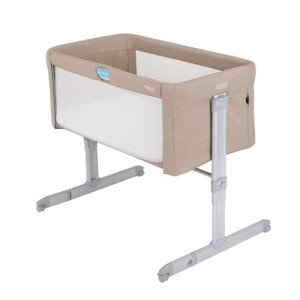The Ultimate Guide to Choosing a Baby Cot Bed: Safety, Features, and More
When it pertains to inviting a new baby, one of the most important purchases moms and dads will make is a baby cot bed. supplemental resources is not only where a baby will sleep; it's likewise an area of comfort, security, and security. Given the wide variety of options offered on the marketplace today, making an informed decision can be frustrating. This guide intends to simplify the process by covering necessary features, safety standards, types of cot beds, and much more.
Tabulation
- Intro
- What is a Baby Cot Bed?
- Security Standards
- Kinds Of Baby Cot Beds
- 4.1 Traditional Cots
- 4.2 Convertible Cot Beds
- 4.3 Portable Cots
- Key Features to Consider
- Picking the Right Mattress
- Setting Up the Cot Bed
- FAQs
- Conclusion
1. Intro
A baby cot bed functions as a dedicated sleeping location for infants and is created to offer convenience and security. As brand-new parents navigate the numerous choices available, it is essential to comprehend the different types of cot beds, security guidelines, and vital functions to make the best selection.
2. What is a Baby Cot Bed?
A baby cot bed is a customized piece of furnishings where infants sleep. Unlike routine beds, cot beds are particularly created for babies and offer a safe environment for them to rest. Best Cot Bed include high sides to prevent children from falling out and often come with adjustable mattress heights to accommodate a growing child.
3. Safety Standards
When choosing a baby cot bed, safety needs to be the foremost factor to consider. Here are some crucial security requirements to remember:
- Certification: Ensure the cot bed meets national and worldwide security standards, such as the ASTM International and Consumer Product Safety Commission (CPSC) policies.
- Slat Spacing: The range in between slats need to not go beyond 2 3/8 inches to avoid the baby's head from slipping through.
- Stability: Ensure that the cot bed does not wobble or shake.
- Non-Toxic Materials: Check for non-toxic finishes and products to ensure the baby's safety.
4. Types of Baby Cot Beds
The marketplace offers various types of cot beds, each catering to various requirements. Below is an overview of the most common types:
4.1 Traditional Cots
Standard cots are standalone furniture items developed particularly for babies. They typically include repaired sides and multiple adjustable mattress heights.
4.2 Convertible Cot Beds
Convertible cot beds can be changed into young child beds, enabling extended usage. This type is an economical option as it grows with your kid.
4.3 Portable Cots
Portable cots, also referred to as travel cots or playards, are lightweight and developed for families on the go. They can be easily put together and dismantled for travel.
5. Secret Features to Consider
When picking a cot bed, parents must consider the following features:
- Adjustable Mattress Height: This function permits reducing the mattress as the baby grows, making it easier for parents to lift the kid.
- Material Quality: Look for a cot bed made of long lasting, non-toxic wood.
- Safety Features: Some cot beds include rounded edges and extra security locking systems.
- Ease of Assembly: Check if the cot bed needs very little tools for assembly and how simple it is to take apart.
- Storage Options: Some cot beds come with built-in drawers for saving baby basics.
6. Picking the Right Mattress
The best bed mattress is essential for your baby's sleep quality. Here are some pointers for choosing a suitable bed mattress:
- Firmness: A mattress needs to be firm adequate to avoid the baby from sinking in too deep, decreasing the threat of suffocation.
- Breathability: Opt for breathable products to make sure appropriate air blood circulation.
- Water-Resistance: Consider waterproof covers for easy cleaning and health.
7. Setting Up the Cot Bed
Installing the cot bed correctly is vital for security. Here are actions parents ought to follow:
- Choose the Right Location: Place the cot bed far from windows, cords, and other prospective threats.
- Examine the Height: Adjust the bed mattress height based on the kid's age and movement.
- Get rid of Extras: Avoid placing pillows, blankets, or stuffed toys inside the cot bed when the baby is sleeping.
- Inspect Regularly: Regularly check all parts and screws for wear and tear.
8. Frequently asked questions
Q1: At what age should a baby transition from a cot to a bed?
Most children shift to a toddler bed between 18 months to 3 years, depending on their development and individual requirements.
Q2: How can I ensure my baby sleeps securely in their cot bed?
Make sure the cot is complimentary of soft bed linen, toys, and anything that might block the baby's breathing. Follow all safety guidelines thoroughly.
Q3: Is it required to have a separate nursery for the cot bed?
While numerous moms and dads pick to have a different nursery, it is not a requirement. As long as the cot bed remains in a safe and quiet environment, it can be put in the parents' bedroom.
Q4: When is it safe to decrease the mattress?
Generally, the bed mattress ought to be reduced when the baby can pull themselves up or when they can sit separately, normally around 6 months.
9. Conclusion
Selecting the right baby cot bed is a basic aspect of preparing for a new arrival. Moms and dads need to focus on security, performance, and quality, guaranteeing that the cot bed meets their household's special requirements. By making the effort to research study and comprehend different types of cot beds, parents can supply a safe and comfy sleeping environment for their kid to grow.
With careful factor to consider, moms and dads can make sure that the cot bed is not simply a furniture piece, but a sanctuary where their baby can sleep comfortably during those essential early years.

